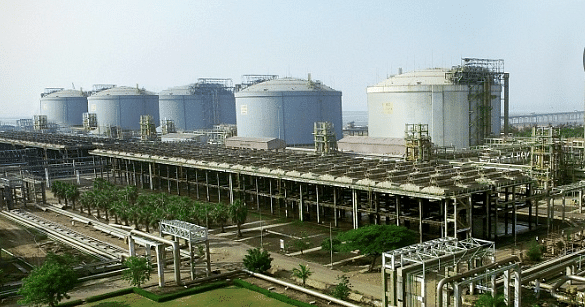[ad_1]
The Ministry of Petroleum and Natural Gas has raised the benchmark price of administered domestic natural gas on Friday, even as the Kirit Parikh panel is working on the pricing formula.
Prices have increased by 40.49% over the previous six months for gas produced from old fields to $8.57 per million metric British thermal units.
The ceiling price for domestic gas produced from challenging deep water and high-pressure-and-high-temperature discoveries has been hiked by 25.60% over the previous six months to $12.46 per mmBtu, as per an order issued by the Petroleum Planning and Analysis Cell.
The prices will be effective between Oct. 1, 2022 to March 31, 2023, the order said.
The price hike has come against the backdrop of rising spot market prices of natural gas, which rose to a high of $60 per mmBtu in August before falling to $35 per mmBtu in September. It remains relatively high compared to domestic gas prices.
The central government has also appointed a high-powered panel led by former Planning Commission Member Kirit Parikh to work on the pricing formula and ways to reduce the impact on domestic customers. The panel was to submit its report by Sept. 30, which would then require cabinet approval.
India prioritises the distribution of domestic natural gas amongst sectors, such as city gas distribution, fertiliser and power.
The country still needs to import roughly half of its requirement of 165 mmscmd in the form of liquefied natural gas.
LNG Prices May Rise Higher
Given the current Russia-Ukraine war and supply sanctions by the European Union, the price of LNG is expected to rise further.
Europe imports over 54% of its natural gas from Russia. However, the sanctions by the U.S. and the EU has led to closure of Nord Stream 1 pipeline by Russia.
“Europe’s need would escalate as winter steps in by the next quarter. This will put India in a tough spot as long-term contracts would be difficult to come by given the extreme spot LNG prices,” Kotak Institutional Securities said in a report last week.
Natural gas consumption in India has been on a decline since 2011. The drop in domestic consumption was on account of a fall in domestic production between 2012 and 2017.
The consumption dropped from 127 mmscmd in 2011 to 80 mmscmd in FY22, as production from the KG D6 field of Reliance Industries Ltd. and Oil and Natural Gas Corp. Ltd. fell, according to PPAC data.
However, LNG imports have seen an upward trend. LNG imports have more than doubled to 85 mmscmd in FY22 from 35 mmscmd in FY11. This has mostly offset the decline in domestic production.
City Gas Distribution Remains Key
The CGD sector is expected to remain a driver of gas consumption in India, according to analysts.
City gas distributors, such as Indraprastha Gas Ltd. and Mahanagar Gas Ltd., have been forced to mix LNG to meet the shortfall in allocation of domestic gas, which has raised their costs, according to their company disclosures.
The unified blended cost of CGDs have increased to $10.5 an mmBtu, analysts said.
“Sectors that depend on natural gas must recalibrate their business model to high natural gas prices as the geopolitical situation in Europe may keep gas prices on the boil for some time,” Debashish Mishra, partner at Deloitte India, had told BQ Prime.
“The availability of long-term LNG contracts will be a major concern for India as European buyers would crowd the market to reduce dependence on Russian gas. This would mean India may have to reconsider the current pricing formula and change the reference prices as the world is seeing a tectonic realignment of demand and supply,” he said.
[ad_2]
Image and article originally from www.bqprime.com. Read the original article here.

